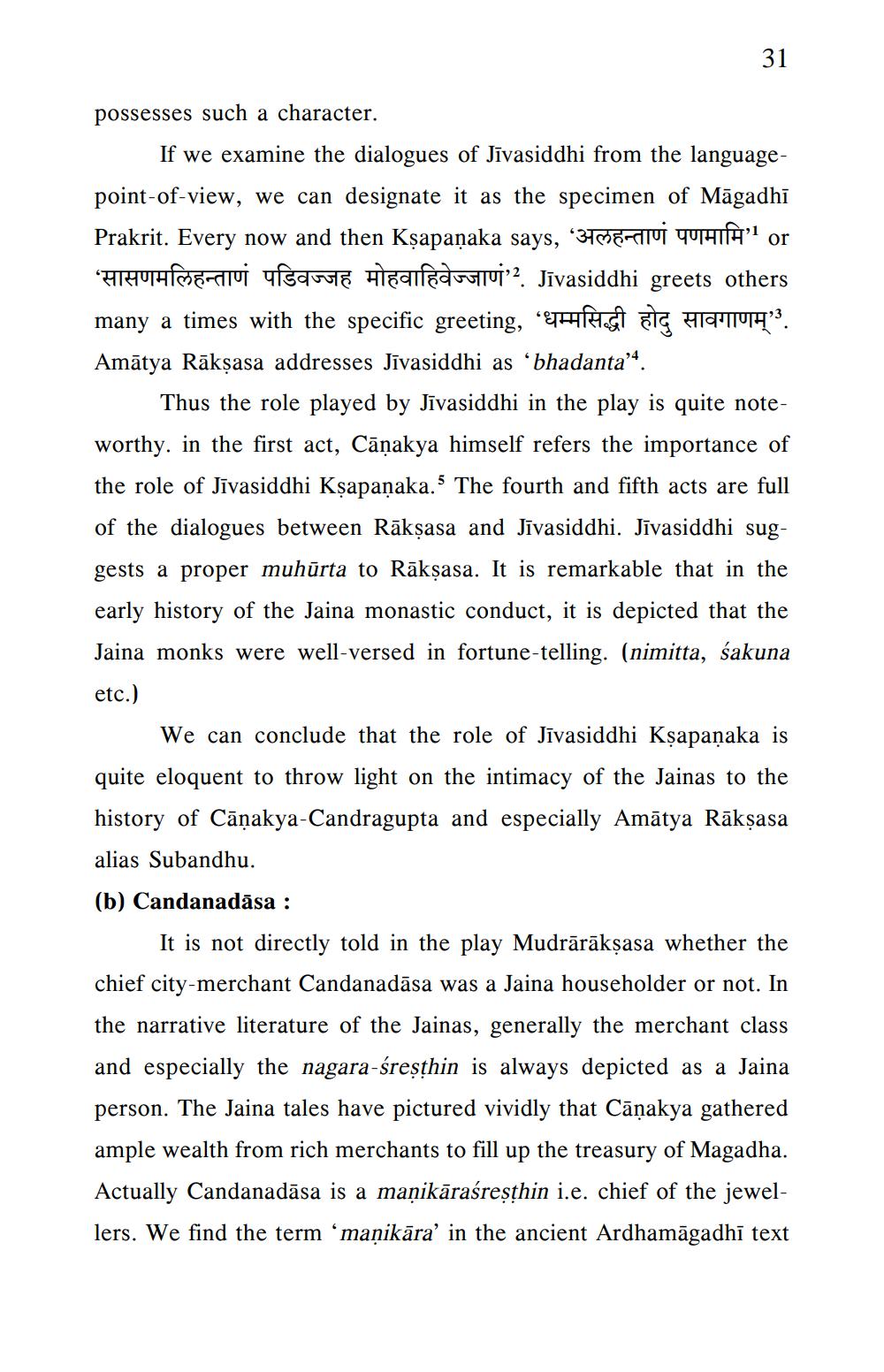________________
31
possesses such a character.
If we examine the dialogues of Jīvasiddhi from the languagepoint-of-view, we can designate it as the specimen of Māgadhī Prakrit. Every now and then Kșapaņaka says, '373E-CIUT MUTHIH' or Hraunferri uffavte HETI Doului2. Jīvasiddhi greets others many a times with the specific greeting, ‘धम्मसिद्धी होदु सावगाणम्''. Amātya Rākṣasa addresses Jīvasiddhi as 'bhadanta”4.
Thus the role played by Jīvasiddhi in the play is quite noteworthy. in the first act, Cāņakya himself refers the importance of the role of Jīvasiddhi Ksapaņaka. 5 The fourth and fifth acts are full of the dialogues between Rākṣasa and Jīvasiddhi. Jīvasiddhi suggests a proper muhūrta to Rākṣasa. It is remarkable that in the early history of the Jaina monastic conduct, it is depicted that the Jaina monks were well-versed in fortune-telling. (nimitta, sakuna
etc.)
We can conclude that the role of Jīvasiddhi Kșapaņaka is quite eloquent to throw light on the intimacy of the Jainas to the history of Cāņakya-Candragupta and especially Amātya Rākṣasa alias Subandhu. (b) Candanadāsa :
It is not directly told in the play Mudrārākṣasa whether the chief city-merchant Candanadāsa was a Jaina householder or not. In the narrative literature of the Jainas, generally the merchant class and especially the nagara-śreșthin is always depicted as a Jaina person. The Jaina tales have pictured vividly that Cāņakya gathered ample wealth from rich merchants to fill up the treasury of Magadha. Actually Candanadāsa is a maņikāraśreşthin i.e. chief of the jewellers. We find the term “maņikāra' in the ancient Ardhamāgadhĩ text




